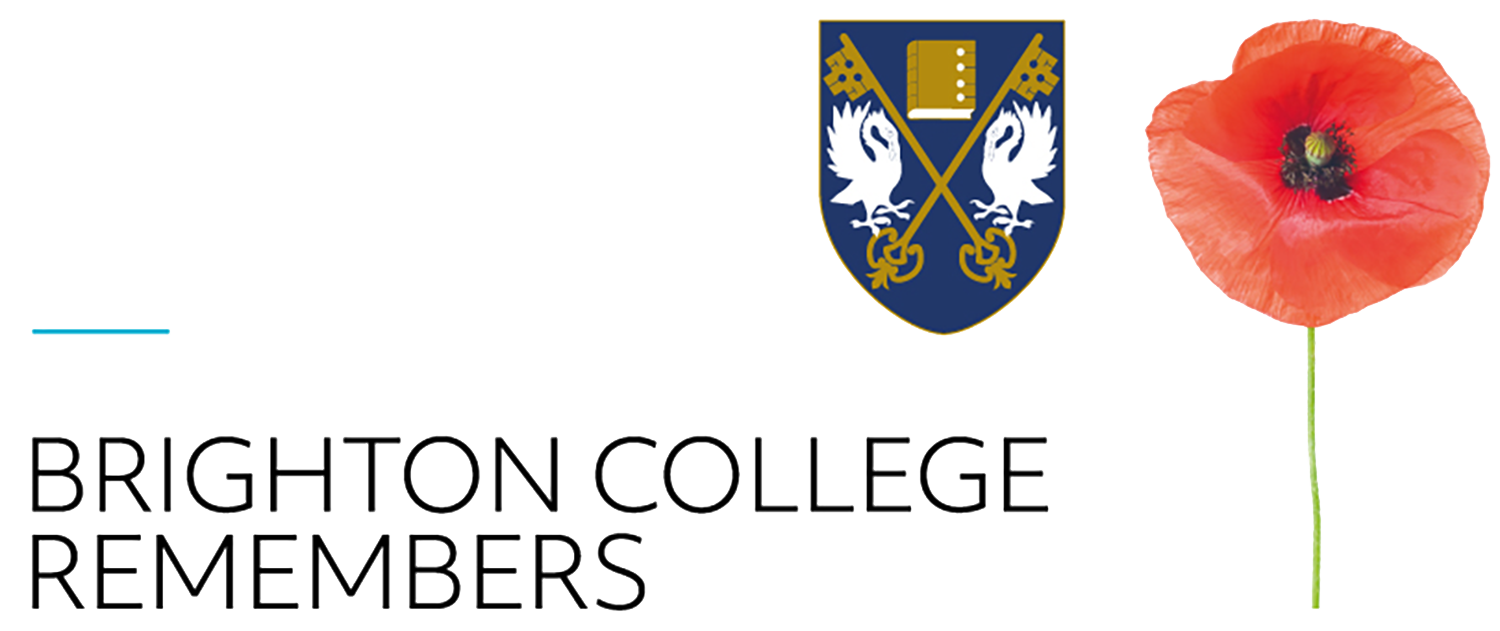Second Lieutenant, Royal Garrison Artillery
Born: February 20th 1893
Died: June 25th 1917
Age at Death: 24
Killed in action, France, June 25th 1917
Medical student at Caius College, Cambridge. Formerly Sergeant in teh 44th Field Ambulance Royal Army Medical Corps.
Grave reference: II.B.39 Dickebush New Military Cemetery Extension
A donation to the memorial statue has been made in honour of this soldier by Ian Howard-Harwood (Du. 1955-58), Alan Howard-Harwood (Ch. 1964-68), Mark Howard-Harwood (Ch. 1985-90), Basia (nee Jaskinski) Howard-Harwood (Fe. 1988-90).
Obituary Brightonian XV July, 1917
Richardson entered Durnford House in January, 1910. He was in the First XI. Football 1910-11 and was a Lance-Corporal in the O.T.C. He was in the Gymnasium VIII. in 1910 and Captain of the VIII. in 1911. He was made a House Prefect in February 1910, and left the College at the end of the summer term, 1912. After leaving the College he went to Lausanne for a few months and entered Caius College, Cambridge, in October, 1913. He read for a degree in medicine until the outbreak of war, when he at once enlisted in the R.A.M.C. He left for France in May, 1915, and was on active service as Sergeant from this date until December, 1916. He then returned to train for an Artillery commission, which he received in the R.G.A. in May, 1917. He left for France on June 15th, and went almost at once to his battery. During his service as Sergeant in the R.A.M.C. he did good work stretcher-bearing at Delville Wood, when he was recommended for the Military Medal.
2nd Lieutenant Archer Stuart Richardson
Archer Stuart Richardson was born in 1893 in Lilleshall, Shropshire. His father was Archer Pratt Richardson and his mother was Dora Loveday Richardson. Archer Richardson was their eldest child and had four younger sisters, three female servants completed the household. As of 1901 the family lived at Aslin Farm, Church Aston, Newport Shropshire. However, Archer Richardson had in fact been born in Paddington, London in 1867 and in the 1891 census appears in the Hampstead register before then apparently moving to Shropshire and becoming, albeit briefly, a farmer, which was the occupation he registered in the 1901 census. However, in 1911, when his son Arthur was at Brighton College he had in fact re-registered as a ‘Turf Accountant’, i.e. a bookie, and was now living in Wandsworth, London. It is possible that his period as a ‘farmer’ was in fact something of a pretence and that he had always in fact been a bookie. He lived an extraordinarily long time, only dying in Surrey in 1957. His wife Dora was listed before she got married as having lived in Eastbourne ‘by her own means’, in other words from the income from family wealth and appears to have come from a Devon farming family so it maybe that the brief stint in Shropshire arose from pressure by her.
Archer Richardson was at Brighton College (Durnford House) 1910-1911. He was a strong sportsman, being Captain and centre back for the 1st XI Football team, third in the open mile and the quarter and a half mile on sports day and a member of the gymnastics team. He was also, however, quite academic and clearly enjoyed debating, taking part in a debate on the motion ‘This House Regrets the Return of the Liberals’ after the results of the very contentious ‘People’s Budget’ election of 1910. The report of the debate suggests that those who took part were in the process of ‘developing their political views’ but annoyingly does not indicate in what direction. After leaving the school he went up to Caius College Cambridge to read medicine.
It is not clear whether in 1915, when Richardson joined the army, he had actually completed his degree and qualified as a doctor but, given the passage of time it is probable that he was, if not qualified, then very nearly qualified. As might be expected, given his profession and the very high demand at the time, he went into Royal Army Medical Corps as Sergeant in the 44th Field Ambulance, which suggests that at that stage he was not in fact fully qualified as a Doctor.
However two years later, on May 3rd 1917, he received a commission as a 2nd Lieutenant and was transferred to the 13th Siege Battalion, Royal Garrison Artillery, a unit which manned the very heavy guns so evocative of the fighting on the Western Front. It is probable that at this point he was considered to be fully qualified as a doctor because his posting was as the Medical Officer to the battalion. On the 25th June 1917, very shortly after his transfer, he was killed in action. His death was probably due to shellfire aimed at destroying the British big guns, this was normally the reason why casualties were sustained in such units, which were in fact normally relatively safe because they were positioned several miles behind the front line.
Archer Richardson is buried in the Dickebusche New Military Cemetery Extension in Ypres, West Flanders. He was recommended for a military medal for his actions in evacuating the wounded from Deville Wood but it appears that a decision on whether to make the award had not been made by the time he was himself killed and the application was allowed to lapse.
Source: LEST WE FORGET PROJECT, Brighton College 2014/15

